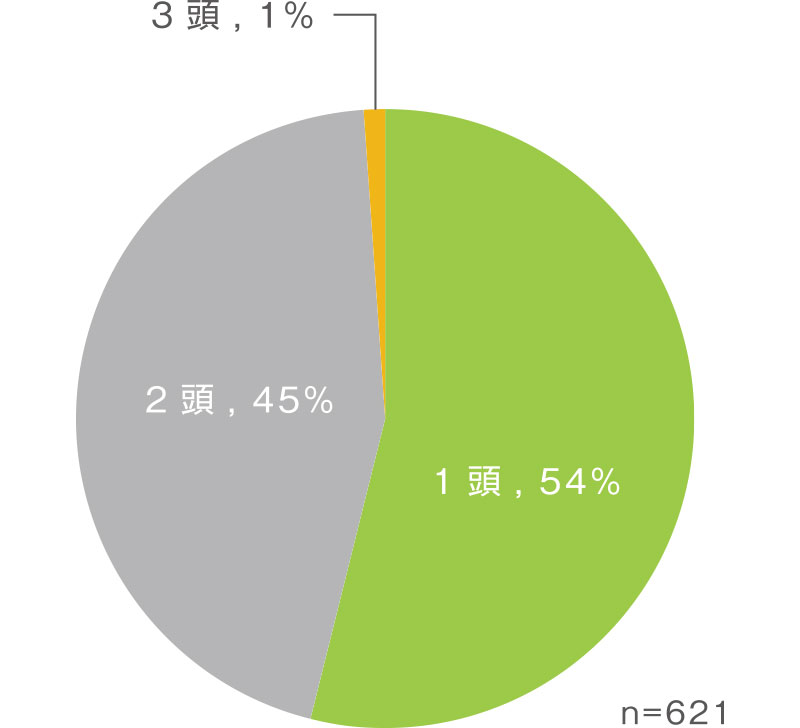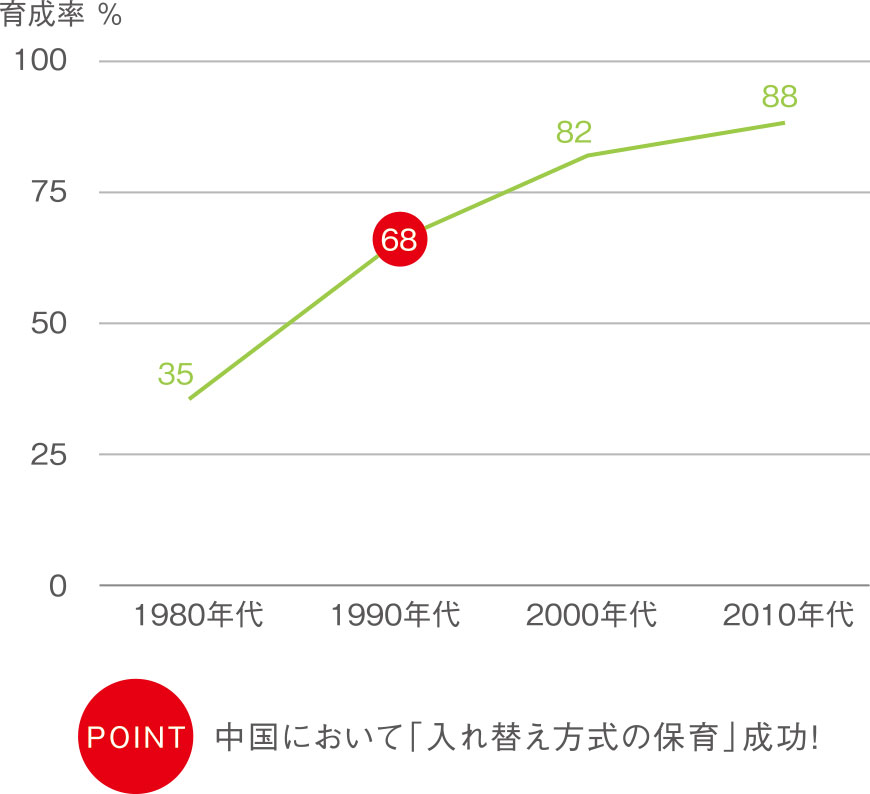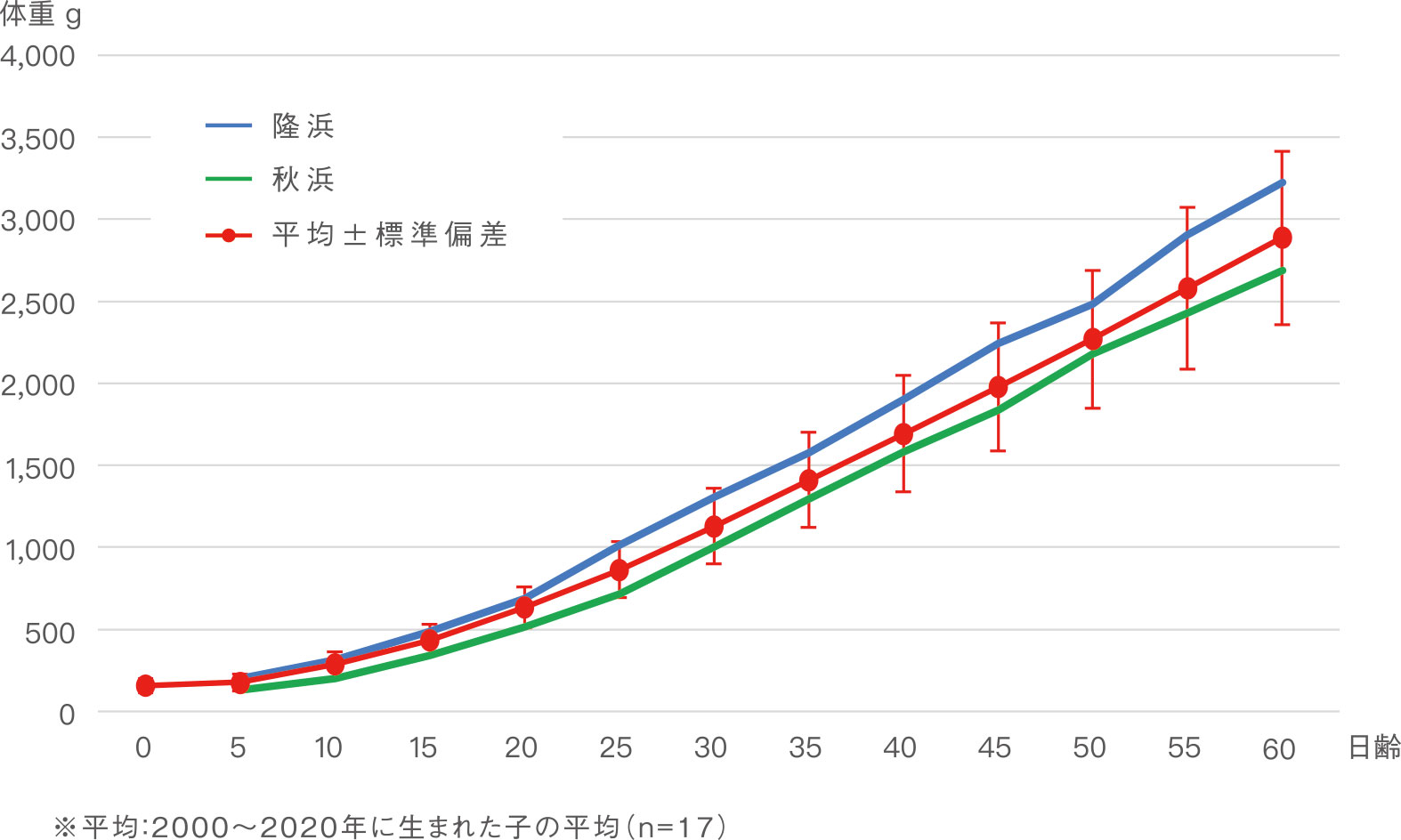

In the 1980s, although the probability of having twins in one birth was as high as 45%, only one
In 1990, the Chengdu Giant Panda Breeding and Research Base succeeded in "twin swapping," resulting in the birth of twins and the survival of both pandas. The success of this method led to a dramatic 88% increase in the panda cub rearing rate, and it has been applied in many breeding facilities around the world as a general management method for twins born to pandas.
-
What is Twins swapping
(replacement method)? In the case of twin births, this method is used to ensure that the babies are breastfed: one is taken from the mother and cared for in the incubator, while the other remains with the mother to feed. After the twins have drunk their milk, they are exchanged with the baby in the incubator.
-
Number of litters (number of animals born in one birth)

-
Trends in baby panda fostering rates

Prepared from The 2019 International Studbook For Giant Panda
In 2003, twins were born in our park and were cared for and raised by their mother (name: "Ume Ume") at the same time. This was the first time in captivity that twins were raised by their mothers at the same time. Umehame gave birth to a second twin about two hours after the first, and both twins (named Takahama and Akihama) were held firmly in her arms as she raised them. The next day, when we weighed them, we found yellow milk stools in both cows, so we decided that they were nursing adequately and decided to continue to entrust them to their mother.
Generally, babies' weight decreases once after birth and then increases. In the case of the twins at the Park (2006, 2008, 2010, and 2014), their birth weights were exceeded at 3-6 days of age, but "Takahama" and "Akihama" weighed 160ℊ and 106ℊ, respectively, at 1 day of age and steadily gained 167 g (+7 g the previous day) and 106 g (0 g the previous day) at 2 days of age without any decrease Both cows weighed about twice as much as at birth at 10 days of age and grew up exclusively on mother's milk until 7 months of age. Umehama gave birth to twins twice, but the second twin, born in 2005 at 66ℊ, died at 1 day of age. In order to ensure that "Meihama" can breastfeed, Twins
The success of the twins ("Ryuhama" and "Akihama") in 2003 was attributed to the high nursing ability of "Mei Mei" and the large amount of milk she produced, as well as the fact that the birth weights of the babies were not very different. During this period, Japanese and Chinese experts collected data on the behavior of giant panda twins in natural nursery and accumulated valuable experience to improve the rate of raising baby pandas in the future. 2003, this case was reported at the International Panda Congress as the first successful simultaneous raising of twins in captivity. The case was reported at an international panda conference in 2003 as the first successful simultaneous raising of twins in captivity.
Takahama and Akihama weight transition

